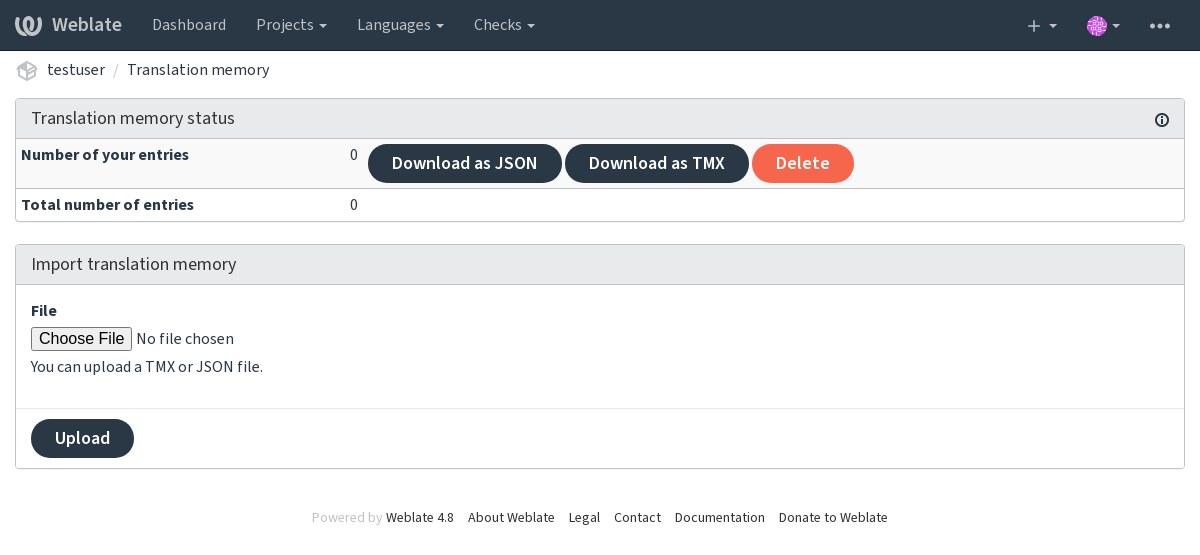Memorie de traducere¶
Nou în versiunea 2.20.
Weblate comes with a built-in translation memory consisting of the following:
Manually imported translation memory (see User interface).
Automatically stored translations performed in Weblate (depending on Translation memory scopes).
Automatically imported past translations.
Content in the translation memory can be applied one of two ways:
Manually, Sugestii automate view while translating.
Automatically, by translating strings using Traducere automată, or Traducere automată addon.
For installation tips, see Weblate Translation Memory, which is turned on by default.
Translation memory scopes¶
Nou în versiunea 3.2: In earlier versions translation memory could be only loaded from a file corresponding to the current imported translation memory scope.
The translation memory scopes are there to allow both privacy and sharing of translations, to suit the desired behavior.
Imported translation memory¶
Importing arbitrary translation memory data using the import_memory
command makes memory content available to all users and projects.
Per user translation memory¶
Stores all user translations automatically in the personal translation memory of each respective user.
Per project translation memory¶
All translations within a project are automatically stored in a project translation memory only available for this project.
Managing translation memory¶
User interface¶
Nou în versiunea 3.2.
In the basic user interface you can manage per user and per project translation memories. It can be used to download, wipe or import translation memory.
Sugestie
Translation memory in JSON can be imported into Weblate, TMX is provided for interoperability with other tools.

Interfața de gestionare¶
There are several management commands to manipulate the translation memory content. These operate on the translation memory as whole, unfiltered by scopes (unless requested by parameters):
dump_memoryExports the memory into JSON
import_memoryImports TMX or JSON files into the translation memory